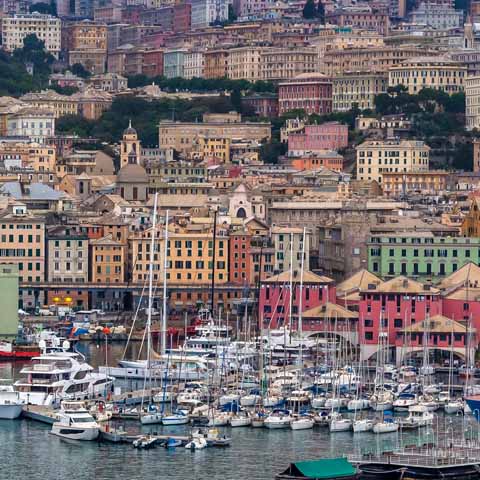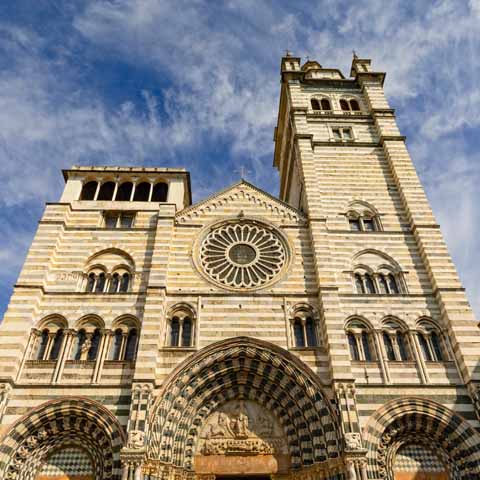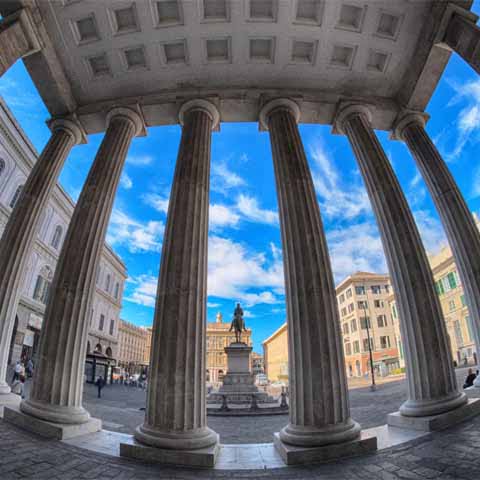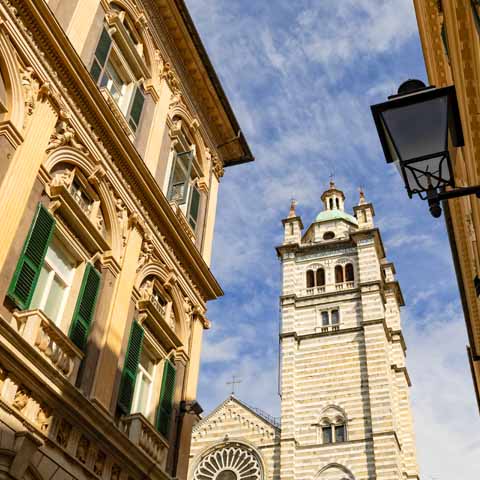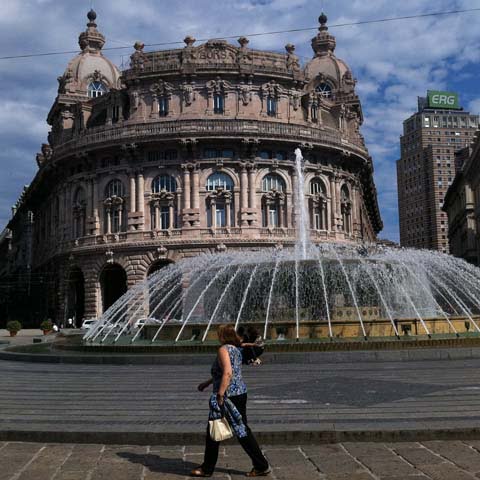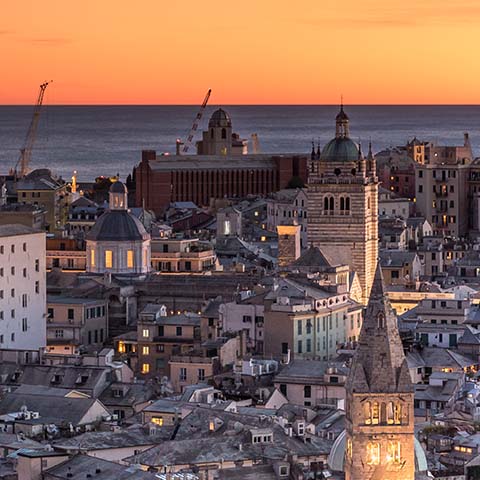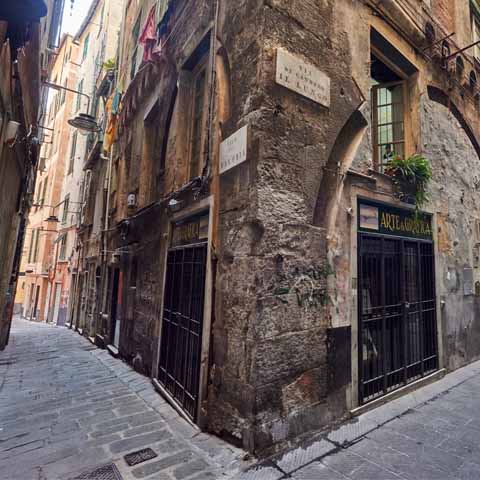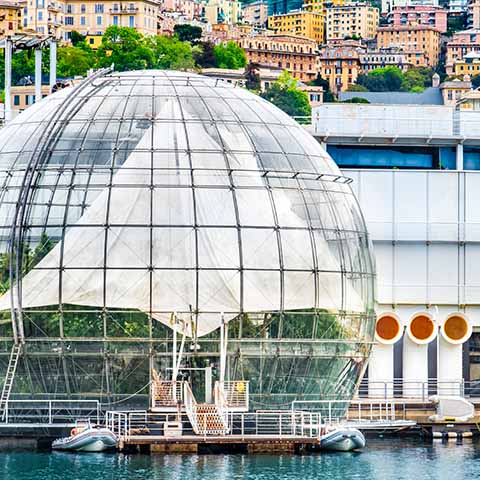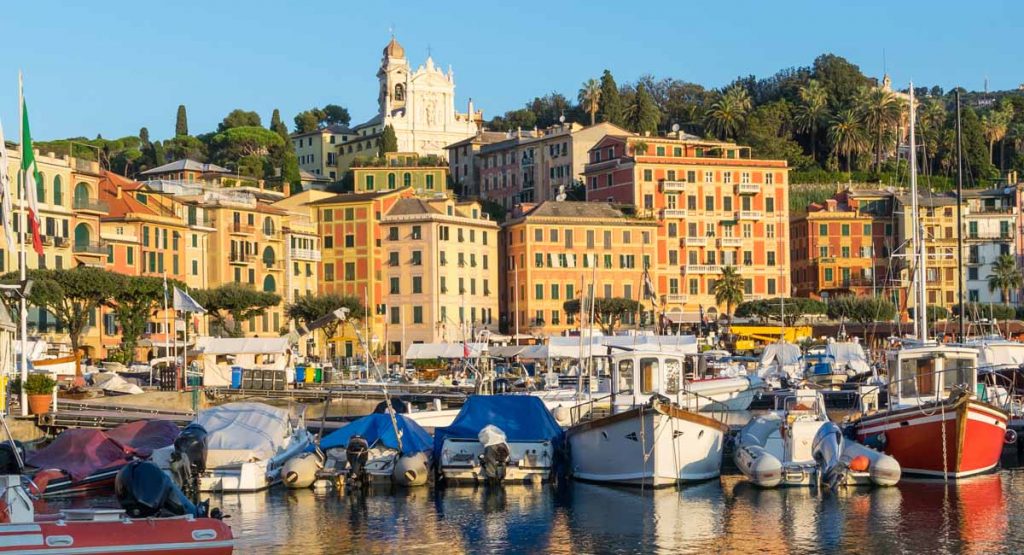Historically, Genoa experienced times of prosperity as well as hardships. The Ligurian city struggled following the fall of the Roman Empire, yet eventually rebounded to become a source of naval power and a leader in maritime commerce. The economic strength of the Genoese was a result of the extensive international trade that took place out of Genoa’s harbor. While the city saw competition amongst neighboring ports of the North Sea, the local merchants and leaders fought to protect the solid economy and wealth of its people. The Genoese Navy was a force to be reckoned with and became known for its unwavering presence in the Mediterranean. As a result, the Republic of Genoa was among the most powerful Maritime Republics in the Mediterranean for approximately seven centuries. Nicknamed “The Proud One” (la Superba), modern Genoa remains a product of its past. The beauty of its landscape is something to be seen, while the history will always be evident in the old port, remaining relics, and one of the largest historical centers in all of Europe.
Located in Northwestern Italy, Genoa is the capital and largest city in the region of Liguria. It is situated on the northern coast of the Mediterranean Sea, which gave the city its prominence among other ports sharing those waters throughout history. It is one of the most active ports in all of Italy, even today.
Genoa has long been a hub for the maritime industry with a large part of the area’s economic success coming from foreign trade and shipbuilding. The success of the local port brought a substantial flow of both people and freight – providing the city with much of its income. This continues to be true. While goods such as crude oil, grain, and coal were most commonly imported, items such as olive oil, wine, and cotton were exported to foreign markets.
Genoa’s centuries of naval supremacy brought an impressive wealth of cultural treasures to the city. Highly renowned for its art, historic palaces, music, and museums, Genoa was designated as the European Capital of Culture for the year 2004. The city is also home to one of the largest universities in Italy, the University of Genoa, and it is the birthplace of several influential figures including Christopher Columbus, Niccolò Paganini, Giuseppe Mazzini, and Renzo Piano.
Genoa’s location is perfect for a quick day trip to other towns thanks to its central location, which allows the city to serve as a gateway to the best of the Liguria region. Countless remarkable sites are only a short train or ferry ride away, such as the Cinque Terre. Consisting of five quaint villages positioned on the rugged cliffs of the Italian Riviera, the Cinque Terre area offers numerous scenic footpaths overlooking the water. Other stunning nearby escapes include the fishing village of Camogli and the San Fruttuoso Abbey, glitzy Portofino, and the small town of Recco, which is renowned for its unique stracchino cheese filled focaccia flatbread.
For international travels, the best way to reach Genoa is by arriving at the international airport, Genoa Cristoforo Colombo Airport, which serves as a hub for the Liguria region as well as southern Piedmont. Once in Genoa, the best way to explore the historical city center is on foot. Due to the city’s vast extension along the coast, it is home to 26 railway stations. The railway network connects Genoa to each end of the Liguria region, allowing for quick day excursions to stunning seaside destinations. For longer excursions, Genoa’s port is a hub for cruise lines and ferries. From Genoa, it is possible to reach both the islands of Corsica and Sardinia by ferry.
GEOGRAPHY & CLIMATE
The city of Genoa is located right in the middle of the Italian Riviera on the Gulf of Genoa along the Mediterranean coast. It ranks as the sixth largest city in Italy and covers approximately 92 square miles. The area is divided into nine districts with over 30 distinct neighborhoods. Wedged between the coastal plains and the rocky terrain of the western Apennine Mountain range, the city of Genoa stretches over roughly 20 miles of coastline.
The climate of Genoa is considered Mediterranean due to its sunny and hot summer months and the rainy and mild conditions of winter. The city can be quite windy, especially during the winter months of December to February. Rainfall is typical during the spring and fall, and while annual snowfall is expected, it typically occurs in small amounts.
WHEN IN GENOA
The city’s historical center, filled with characteristic narrow streets known as carruggi, was designated a UNESCO World Heritage site in 2006. It consists of the major streets (Strade Nuove) constructed by the Genoese aristocracy during the peak of the Republic of Genoa in the sixteenth and seventeenth centuries, as well as a series of noble Renaissance and Baroque palaces – 42 in all. The palaces were once part of a Rolli (List) System, which provided lodging to distinguished guests on diplomatic visits to the Republic of Genoa. As part of the system, the guests would be lodged in one of the private palaces on behalf of the government.
Today, travelers to Genoa can visit all of the palaces during Rolli Days, an initiative by the city of Genoa to promote the cultural value of the historic buildings. On specified days of the year (usually certain weekends in April and October), the palaces, both public and private, are open to the public. To support the initiative, guided itineraries are organized and led by scholars from the University of Genoa who explain the historic and cultural context of the buildings.
No matter what time of year you visit Genoa, the city center is the ideal location for travelers to take in the historic ambiance the city has to offer. Palazzo Ducale, Palazzo Reale, and Palazzo Bianco are among the most notable palaces – and definite must-sees during any visit to Genoa. Today, Via Garibaldi is the site of several Palazzi dei Rolli (Palazzo Tursi, Palazzo Rosso, and Palazzo Bianco), which can be visited as one museum, as well as the city’s government.
As you make your way through the carruggi, do not miss the two symbols of Genoa: the Lanterna, a 384-foot lighthouse that watches over the port, and the elegant fountain located in Piazza De Ferrari, the main city square. In a city filled with historic churches, the grandest is the Cathedral of San Lorenzo, a Gothic church completed in the fourteenth century, known for its distinct striped façade.
So much of the city’s history is defined by its coastal location and the impact of the port on the local residents and the economy. Therefore, in order for visitors to truly have a glimpse into what made the city what it is today, the old port is a must-see. Porto Antico was the city’s connection to international trade and tourism. After a period of redevelopment and restoration led by famed architect — and Genoa native — Renzo Piano, today the port is considered the beating heart of the city’s cultural life. It is an ideal place to take a stroll through the narrow alleys and admire a bit of history and scenic beauty.
While exploring the old port, visitors should experience the Aquarium — one of the largest in Europe. Originally opened for the Genoa Expo in 1992, it offers visitors of all ages an opportunity to see a large population of sea life. There are engaging exhibits and frequent educational events focused on aquatic habitats and conservation. The treasures of the “old port” don’t stop there. Visitors can watch the many boats docked at the harbor, admire scenic views of the city and harbor from the Bigo panoramic observation deck, and marvel at the Gothic and Renaissance architecture of Palazzo San Giorgio.
Beneath Genoa’s industrial exterior, curious travelers will uncover a treasure trove of culture and beauty in the form of historic palaces, eminent museums, and striking coastal scenery. Any trip to the Italian Riviera should include a few days in Genoa for an unforgettable historical and cultural immersion.
Travel Guides
The Liguria Region of Italy
The Cities of Liguria, Italy
